Advice
New 24 plates: what do UK number plates mean?
24 and 74 plates will be in market in 2024 - here's everything you need to know before you get one.
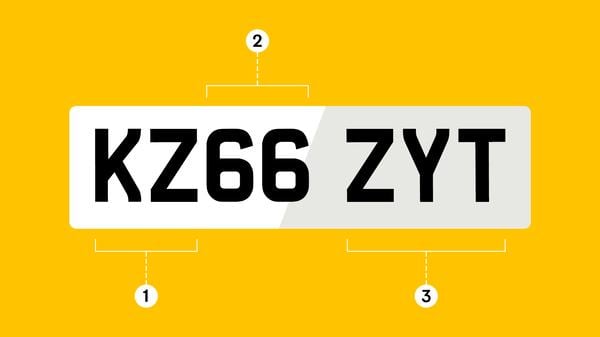

Words by: Andrew Woodhouse
Last updated on 9 February 2024 | 0 min read
New number plates arrive twice a year, in March and September, but what changes each time, and what do they actually mean for car buyers?
Let’s look at how the number plate system works and how it can show you the age of a car, where the car was registered, and what plates are out there today.
Let’s look at how the number plate system works and how it can show you the age of a car, where the car was registered, and what plates are out there today.
What is the March 2024 plate?
From 1 March 2024, new cars will be registered with a 24-plate. The new 24-plate will apply to all new vehicles registered until August 31st, 2024.
All new number registration plates will incorporate the number plate changes introduced from 1 September 2021, which mandate the use of solid black lettering and more durable materials.
All new number registration plates will incorporate the number plate changes introduced from 1 September 2021, which mandate the use of solid black lettering and more durable materials.
How does the number plate system work?
All standard number plates follow the same system. If we take the plate MA70 TDR as an example, we can show you how it works:
1. The first two letters are the ‘local memory tag’, which is where the vehicle was registered. For example, LA to LY cover London, and MA – MY covers Manchester and Merseyside. 2. The next two digits are numbers known as the ‘age identifier’. These are changed every six months, in March and September. The March number is usually the same as the year, and September is the year plus 50. For example: • '17' was introduced in March 2017 and '67' in September 2017 • '18' in March 2018 and '68' in September 2018 • '19' in March 2019 and '69' in September 2019 • ‘20’ in March 2020 and ‘70’ in September 2020 • ‘21’ in March 2021 and ‘71’ in September 2021 • ‘22’ in March 2022 and ‘72’ in September 2022 • ‘23’ in March 2023 and ‘73’ in September 2023 So, a car with a ‘24’ plate will be registered between March and the end of August in 2024, while a car with a ‘74’ plate will be registered between September 2024 and the end of February 2025. 3. The last three letters are randomly chosen and allocated to a dealership when the car is registered. Some personalised plates don’t follow this system, but we’ll get into those in a bit.
1. The first two letters are the ‘local memory tag’, which is where the vehicle was registered. For example, LA to LY cover London, and MA – MY covers Manchester and Merseyside. 2. The next two digits are numbers known as the ‘age identifier’. These are changed every six months, in March and September. The March number is usually the same as the year, and September is the year plus 50. For example: • '17' was introduced in March 2017 and '67' in September 2017 • '18' in March 2018 and '68' in September 2018 • '19' in March 2019 and '69' in September 2019 • ‘20’ in March 2020 and ‘70’ in September 2020 • ‘21’ in March 2021 and ‘71’ in September 2021 • ‘22’ in March 2022 and ‘72’ in September 2022 • ‘23’ in March 2023 and ‘73’ in September 2023 So, a car with a ‘24’ plate will be registered between March and the end of August in 2024, while a car with a ‘74’ plate will be registered between September 2024 and the end of February 2025. 3. The last three letters are randomly chosen and allocated to a dealership when the car is registered. Some personalised plates don’t follow this system, but we’ll get into those in a bit.
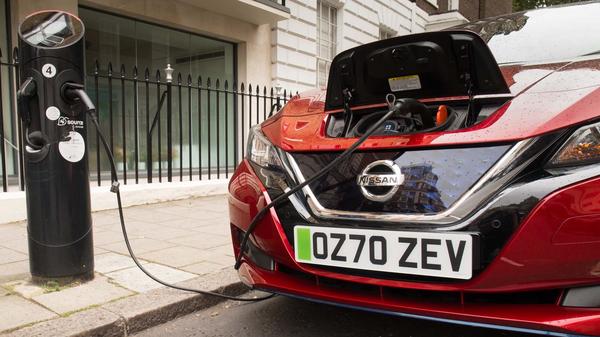
Where was my car registered?
You can use the memory tags (the first two letters) to find out where the car was registered. Here’s your key:
AA-AY = Anglia BA-BY = Birmingham CA-CY = Cymru DA-DY = Deeside to Shrewsbury EA-EY = Essex FA-FY = Forest and Fens GA-GY = Garden of England HA-HY = Hampshire and Dorset HW = Isle of Wight KA-KY = Borehamwood and Northampton LA-LY = London MA-MY = Manchester and Merseyside NA-NY = North OA-OY = Oxford PA-PY = Preston RA-RY = Reading SA-SY = Scotland VA-VY = Severn Valley WA-WY = West of England YA-YB = Yorkshire The letters I and Q aren’t used in standard number plates, and the letter z only appears in random selection at the end.
AA-AY = Anglia BA-BY = Birmingham CA-CY = Cymru DA-DY = Deeside to Shrewsbury EA-EY = Essex FA-FY = Forest and Fens GA-GY = Garden of England HA-HY = Hampshire and Dorset HW = Isle of Wight KA-KY = Borehamwood and Northampton LA-LY = London MA-MY = Manchester and Merseyside NA-NY = North OA-OY = Oxford PA-PY = Preston RA-RY = Reading SA-SY = Scotland VA-VY = Severn Valley WA-WY = West of England YA-YB = Yorkshire The letters I and Q aren’t used in standard number plates, and the letter z only appears in random selection at the end.
What are the upcoming number plates?
Here are all the number plates coming up in the 2023s:
2023 = 23 and 73 plates 2024 = 24 and 74 plates 2025 = 25 and 75 plates 2026 = 26 and 76 plates 2027 = 27 and 77 plates 2028 = 28 and 78 plates 2029 = 29 and 79 plates The 2030s will follow the same system, starting with 30 and 80 plates.
2023 = 23 and 73 plates 2024 = 24 and 74 plates 2025 = 25 and 75 plates 2026 = 26 and 76 plates 2027 = 27 and 77 plates 2028 = 28 and 78 plates 2029 = 29 and 79 plates The 2030s will follow the same system, starting with 30 and 80 plates.
Should I wait until a new plate is released before I buy a car?
If you want to buy a new car with the latest number plate, then arrange to wait until March or September for your new car to be registered and delivered to you when you visit the dealer. Factoring in any delays, it might be worth ordering your new car in advance.
If you’re not fussed about the latest plate, you might be able to get a bargain by buying sooner. Dealers sometimes get rid of old stock at discounted prices in February and August each year. If you're wondering when the best time to buy a car is, read this.
If you’re not fussed about the latest plate, you might be able to get a bargain by buying sooner. Dealers sometimes get rid of old stock at discounted prices in February and August each year. If you're wondering when the best time to buy a car is, read this.
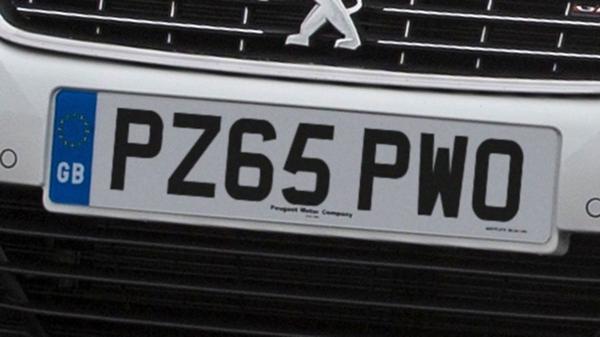
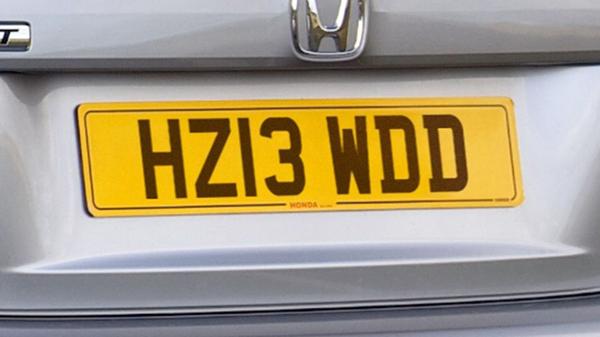
What was the old number plate system?
If you’re looking at second hand or classic cars, you’ll probably see number plates with different layouts. This is the old system, which was phased out in 2001.
The older number plates will follow this format: A 470 TDR. This is how it works: 1. The first letter is the ‘age identifier’, representing the year the car was registered. This originally changed each year in August, but from 1999 it was updated every six months instead. 2. The three digits are random numbers. 3. Two of the final three letters indicate the area of registration, while the other is random. From 1963 to 1983, the letter identifying the year of the car was at the end of the plate, and the original once-a-year plate change system operated until 1999. As a result, dealers would see a huge increase in car sales in August each year from drivers who wanted to be seen in the newest cars, which led to lower sales during the rest of the year. The DVLA says the format will be reviewed and updated again in 2050, so you've got a while before you have to worry about that.
The older number plates will follow this format: A 470 TDR. This is how it works: 1. The first letter is the ‘age identifier’, representing the year the car was registered. This originally changed each year in August, but from 1999 it was updated every six months instead. 2. The three digits are random numbers. 3. Two of the final three letters indicate the area of registration, while the other is random. From 1963 to 1983, the letter identifying the year of the car was at the end of the plate, and the original once-a-year plate change system operated until 1999. As a result, dealers would see a huge increase in car sales in August each year from drivers who wanted to be seen in the newest cars, which led to lower sales during the rest of the year. The DVLA says the format will be reviewed and updated again in 2050, so you've got a while before you have to worry about that.
Using the number plate to work out a car’s age
Knowing a car’s age can help you work out how much insurance you are going to have to pay on it. It can also give you an idea of what to expect in terms of the car's technology and capability.
You’ve got two ways of doing this:
You’ve got two ways of doing this:
Using old number plates to find a car’s age
Cars released in the old system used letters — from A to Z. If it's confusing then don't worry, here’s the full list of number plate years and their age identifier for used cars. Simply look for the letter or number, and it'll show you the year it was released.
• 1963 A • 1964 B • 1965 C • 1966 D • 1967 E/F • 1968 F/G • 1969 G/H • 1970 H/J • 1971 J/K • 1972 K/L • 1973 L/M • 1974 M/N • 1975 N/P • 1976 P/R • 1977 R/S • 1978 S/T • 1979 T/V • 1980 V/W • 1981 W/X • 1982 X/Y • 1983 Y/A • 1984 A/B • 1985 B/C • 1986 C/D • 1987 D/E • 1988 E/F • 1989 F/G • 1990 G/H • 1991 H/J • 1992 J/K • 1993 K/L • 1994 L/M • 1995 M/N • 1996 N/P • 1997 P/R • 1998 R/S • 1999 S/T/V • 2000 V/W/X • 2001 X/Y/51
• 1963 A • 1964 B • 1965 C • 1966 D • 1967 E/F • 1968 F/G • 1969 G/H • 1970 H/J • 1971 J/K • 1972 K/L • 1973 L/M • 1974 M/N • 1975 N/P • 1976 P/R • 1977 R/S • 1978 S/T • 1979 T/V • 1980 V/W • 1981 W/X • 1982 X/Y • 1983 Y/A • 1984 A/B • 1985 B/C • 1986 C/D • 1987 D/E • 1988 E/F • 1989 F/G • 1990 G/H • 1991 H/J • 1992 J/K • 1993 K/L • 1994 L/M • 1995 M/N • 1996 N/P • 1997 P/R • 1998 R/S • 1999 S/T/V • 2000 V/W/X • 2001 X/Y/51
Using new number plates to find a car’s age
You can find a car’s age using the third and fourth digits of the new number plates. They will either be the last two digits of the release year (17 for cars released March 2017, for example) or the last two digits plus 50 for cars released in September (67 for cars released in September 2017).
2002 02/52
2003 03/53
2004 04/54
2005 05/55
2006 06/56
2007 07/57
2008 08/58
2009 09/59
2010 10/60
2011 11/61
2012 12/62
2013 13/63
2014 14/64
2015 15/65
2016 16/66
2017 17/67
2018 18/68
2019 19/69
2020 20/70
2021 21/71
2022 22/72
2023 23/73
2024 24/74
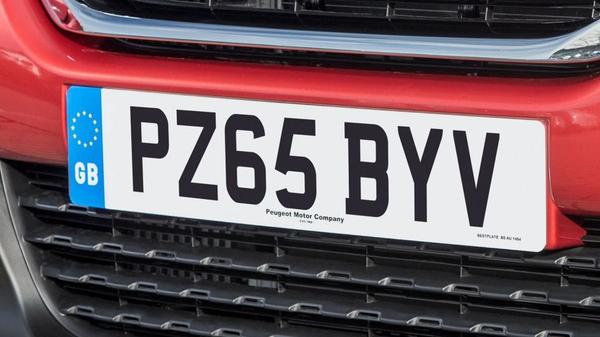
Why do vehicles have number plates?
Number plates are used to identify, register and tax vehicles. Generally, the number plate stays with the vehicle until the vehicle is destroyed or exported – though you can transfer the number plate to another vehicle in some instances.
Do I need a number plate?
Yes, it’s illegal to drive without legitimate, regulation plates.
Can I change my number plate?
You cannot tamper with a registration plate, for example swapping letters and numbers around. You also cannot alter the plate to make it hard to read. If your vehicle has incorrectly displayed number plates, it will fail its MOT and you could face fines of up to £1,000.
You can buy a personalised plate and use this, provided it meets the DVLA’s standards and is properly registered.
You can buy a personalised plate and use this, provided it meets the DVLA’s standards and is properly registered.
Number plate specifications
Number plates have to follow strict guidelines that cover the size and spacing of the letters and numbers (characters).
If something looks suspicious or off about a number plate, double check it’s real and you’re not being scammed. • Characters must be 79mm tall and 50mm wide, although number 1 and the letter L aren’t as wide • The space between characters must be 11mm • Character strokes must have a thickness of 14mm • The margins at the top, bottom and sides must be 11mm • The space between the age identifier and the random letters must be 33mm Only one font has been used since 2001: the Charles Wright font – if it looks different, be suspicious. All vehicles made after 1 January 1973 have the same number plate colours: a white background for the front plate and a yellow background on the rear plate. Related: Increase in illegal and cloned number plates
If something looks suspicious or off about a number plate, double check it’s real and you’re not being scammed. • Characters must be 79mm tall and 50mm wide, although number 1 and the letter L aren’t as wide • The space between characters must be 11mm • Character strokes must have a thickness of 14mm • The margins at the top, bottom and sides must be 11mm • The space between the age identifier and the random letters must be 33mm Only one font has been used since 2001: the Charles Wright font – if it looks different, be suspicious. All vehicles made after 1 January 1973 have the same number plate colours: a white background for the front plate and a yellow background on the rear plate. Related: Increase in illegal and cloned number plates
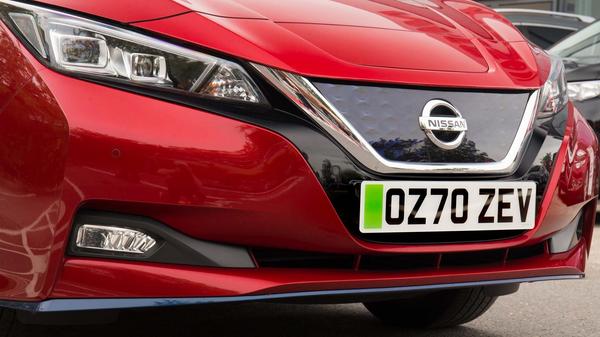
What are green number plates?
The first green number plates were released on Tuesday, 8 December 2020.
These number plates have a distinctive green segment down one side, where the optional blue EU country identifier previously went. They follow the same specification as all other legal plates. Green number plates are designed to make it easier to identify zero-emission and fully electric cars, and will help local authorities design and implement policies that benefit electric car drivers, such as cheaper parking or bypass congestion zone charges. Green number plates can be retro-fitted to any existing vehicles – provided they don’t emit CO2 tailpipe emissions. Learn more about green number plates.
These number plates have a distinctive green segment down one side, where the optional blue EU country identifier previously went. They follow the same specification as all other legal plates. Green number plates are designed to make it easier to identify zero-emission and fully electric cars, and will help local authorities design and implement policies that benefit electric car drivers, such as cheaper parking or bypass congestion zone charges. Green number plates can be retro-fitted to any existing vehicles – provided they don’t emit CO2 tailpipe emissions. Learn more about green number plates.
Do plate changes affect personal plates?
Yes, the bi-annual number plate changes impact a personalised number plate’s age identifier.
The age identifier (the third and fourth digits) on the plate must be on a vehicle of equal age or newer. For example, if your personalised plate starts with XX19, then the car will have to have been registered in March 2019 or after. Learn more about private number plates here.
The age identifier (the third and fourth digits) on the plate must be on a vehicle of equal age or newer. For example, if your personalised plate starts with XX19, then the car will have to have been registered in March 2019 or after. Learn more about private number plates here.